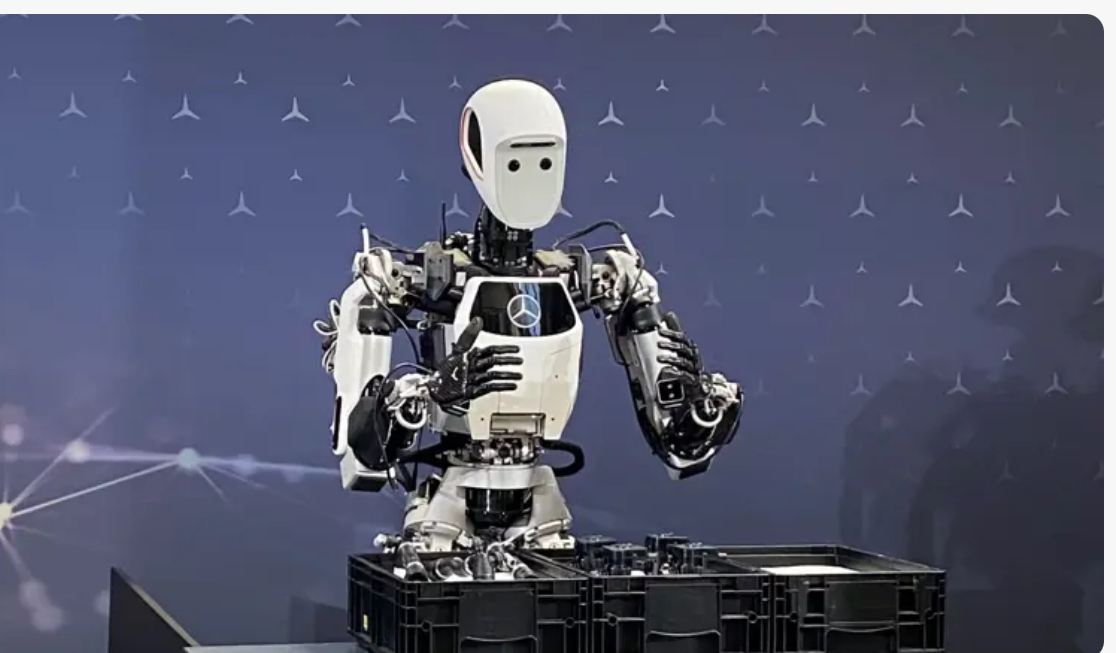A humanoid machine called Apollo has just taken a tentative, slightly jerky, but significant step forward in the robot revolution.
The 5’8″ tall robot performed the first public demonstration in a real-world setting of a real-world task – in this case assembling an engine part – entirely autonomously.
A humanoid machine called Apollo has just taken a tentative, slightly jerky, but significant step forward in the robot revolution.
The 5’8″ tall robot performed the first public demonstration in a real-world setting of a real-world task – in this case assembling an engine part – entirely autonomously.
Mercedes-Benz has announced a multimillion-pound investment in Apptronik and is trialling a handful of the humanoid robots at its factory in Berlin and another in Hungary.
Investors and industrial firms – particularly carmakers with long experience of using robots in manufacturing – have been closely following the development of human-like robots.
The costs of small, lightweight components have fallen as artificial intelligence (AI) algorithms and computer vision technology have led to rapid advances in the field of robots that can emulate human movement and tasks.
But despite a rising number of increasingly impressive-looking cyborgs being unveiled by tech companies in the US and Asia, few have taken their first steps out of the lab.
The Apollo robot looks small and underpowered surrounded by the huge robotic arms that weld, bolt and inspect Mercedes’ latest cars at the Berlin-Marienfelde plant.
But hosting a robot with a human “form-factor” is more than just a photo opportunity, according to Mercedes-Benz.
“There’s one big advantage,” says Jorg Burzer, head of production and supply chain management at the German carmaker.
“A humanoid robot is flexible, so you can basically introduce it to an assembly line or internal logistics or quality inspection… you can basically move it from one place to another.”
Introducing a new assembly line, or upgrading an old one with traditional robotic arms is a major investment.
A robot that can be adapted to a range of tasks and work alongside humans would avoid that investment.
With hands and feet like ours, they can operate tools and work in the same workspaces as people.
Apollo can lift more than 25kg and potentially perform repetitive tasks that are, in the words of humanoid robot developers, too “dull, dirty or dangerous” for humans.
The purpose of the trial is to establish which tasks humanoid robots can usefully do and help improve the machine learning and dexterity required to do more.
“We want to try to find out what is really possible,” says Mr Burzer.
“It’s also very important to test how a humanoid robot can be integrated in running production together with our colleagues working here every day.”
Credit: Sky News













Leave a comment